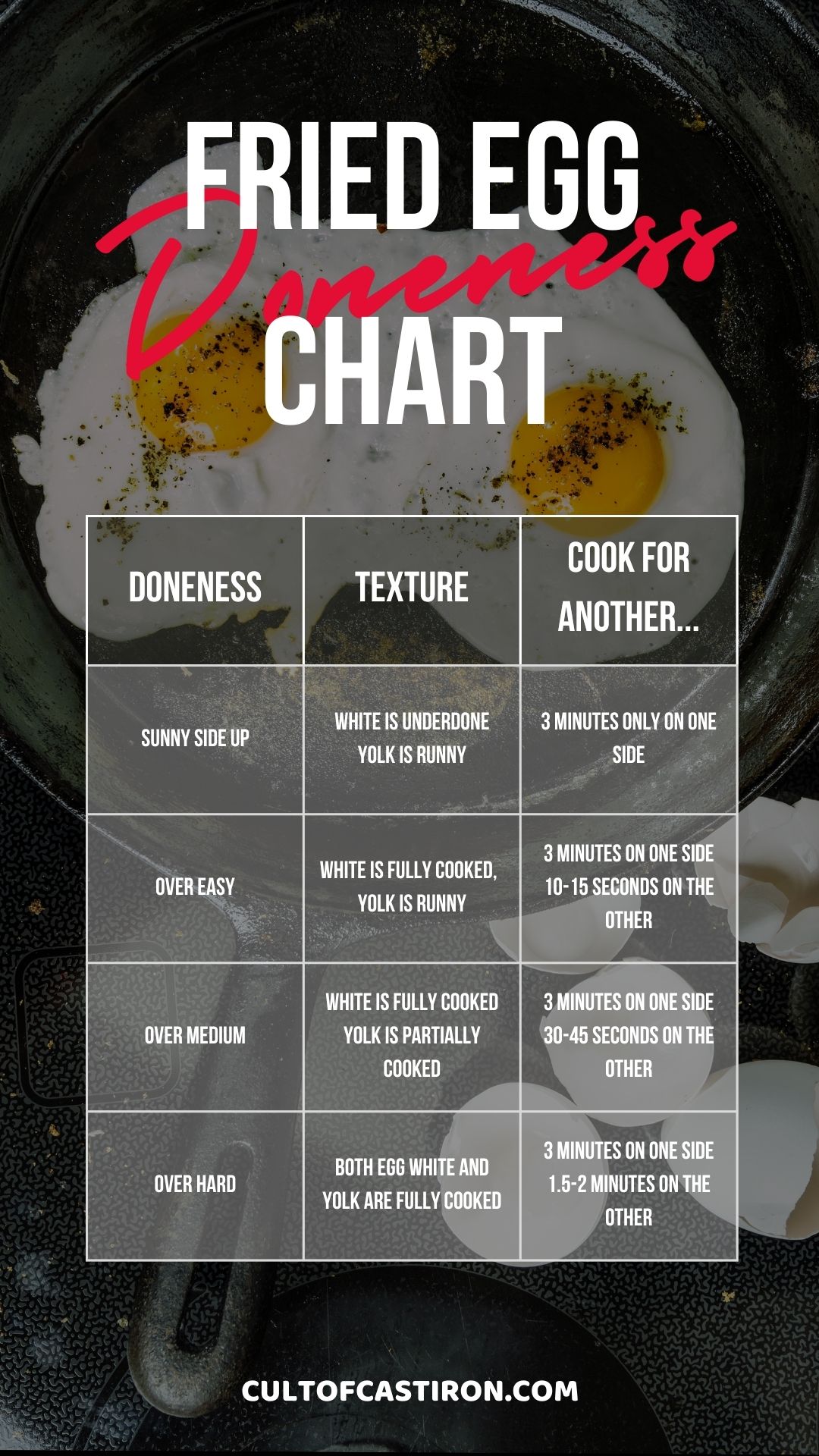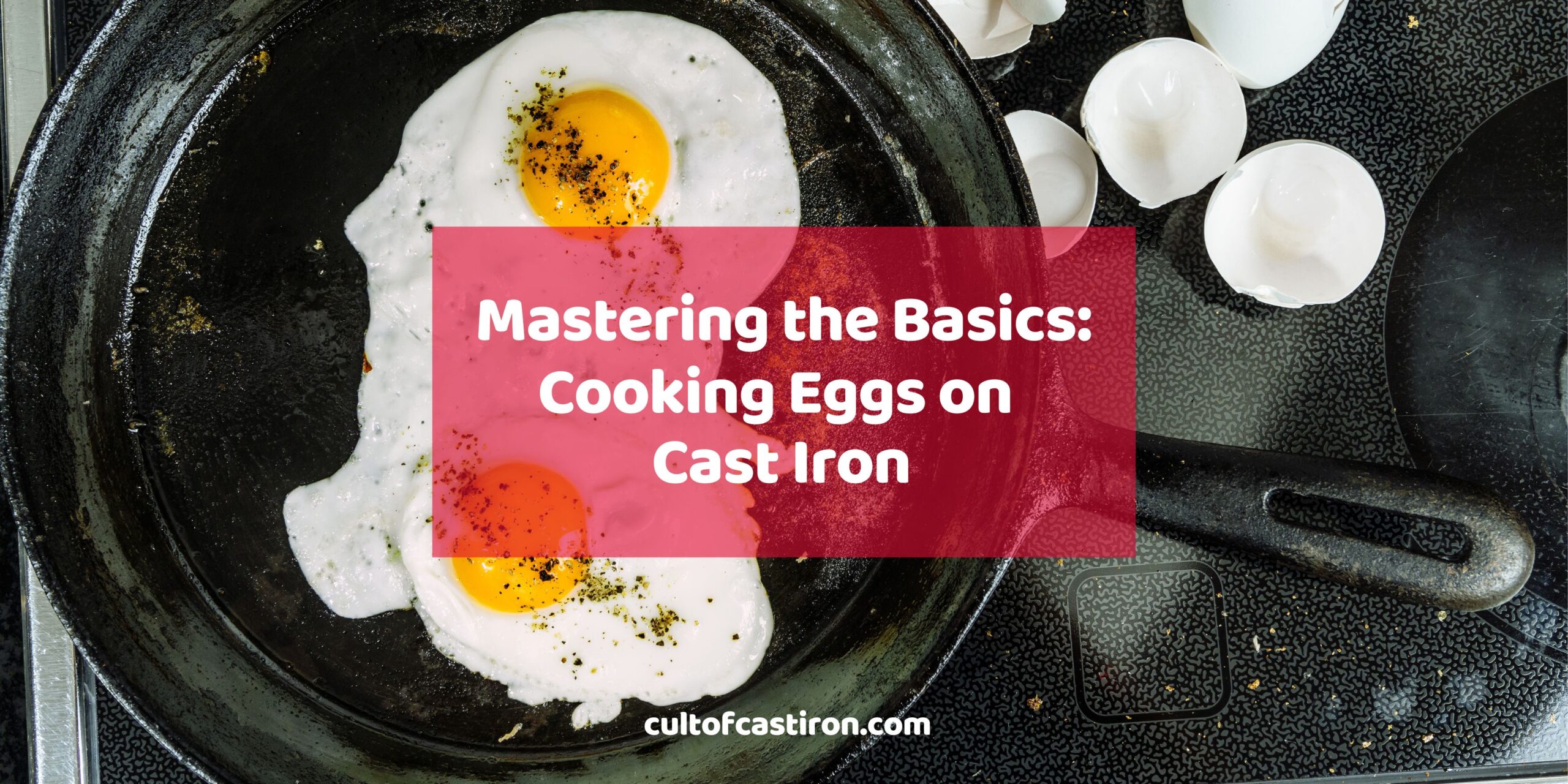Frying eggs is a daily and mundane task for many people. Whether for breakfast, lunch, or dinner, eggs are a versatile and nutritious food you can cook in many ways. However, cooking eggs on cast iron can be tricky and frustrating.
Cast iron pans are known for their durability and heat retention, but they can also cause eggs to stick and burn if not handled properly. In this article, we’ll show you how to cook eggs on cast iron without making a mess so you can enjoy your favorite egg dishes every time!
How to Cook Eggs in a Cast Iron Skillet
Cooking eggs in a cast iron skillet is quite easy. You just need to follow these basic steps:
Pre-heat the pan
Before you crack your eggs, make sure your cast iron pan is pre-heated over medium-high heat. Doing so will ensure even cooking and prevent the egg from sticking to the pan.
Test the temperature by sprinkling some water on the pan. If the water sizzles and dances around the surface of the pan, then it is ready. However, If it evaporates quickly, then the pan is too hot.
Add your oil of choice
Add oil to the pan and swirl it around to coat the surface. You can use oil with a high smoke point, such as vegetable, canola, or avocado.
You can also use butter for extra flavor, but be careful not to let it brown or burn.
Crack in your eggs
Now, you can crack your eggs directly into the pan or a small bowl first before sliding them into the pan. Try to space them evenly and avoid overcrowding the pan. Season your eggs with salt, pepper, or any other spices you like!
Cover the pan (or don’t!)
This step depends on how you like your eggs cooked. If you want to fully cook your egg whites with a firm yolk, you can cover the pan with a lid or aluminum foil. This will create steam and help cook the top of the egg white faster.
However, you may want to skip this step if you prefer your yolks to be more runny. Covering the pan can also cook the egg yolk too fast, so you should be mindful if you aim for a certain kind of doneness.
Scoop out finished pieces with a turner
When your eggs are done to your liking, use a spatula or a turner to lift them gently from the pan and transfer them to a plate. You can also use a paper towel to blot excess oil from the eggs.
The 4 Kinds of Fried Egg Doneness
Fried eggs can be cooked in different ways depending on how you like your yolks and whites. Here are some common types of fried egg doneness and how to achieve them:

1. Sunny-Side-Up
Sunny-side-up eggs are cooked only on one side for three minutes, leaving the yolk runny but the white still firm. Turn up the heat for a few seconds to produce crispy edges.
2. Over-Easy
Over-easy eggs are cooked on both sides, the first one for three minutes, but only briefly on the second side (roughly 10-15 seconds). A white film will appear over the yolk, but it will still remain runny and the white is fully cooked.
3. Over-Medium
Over-medium eggs are cooked on both sides, the first side for three minutes, and the second side for 30-45 seconds, until the yolk is partially set and still moist but not runny.
4. Over-Hard
Over-hard eggs are cooked on both sides until the yolk is completely set and hard. They are usually cooked for 3 on the first side and 1.5 to 2 minutes on the other.
How to Prevent Eggs from Sticking to Cast Iron
One of the main challenges of cooking eggs on cast iron is preventing them from sticking to the pan. Below are some effective tips to help you avoid this problem.
Take your eggs out of the fridge beforehand
Cold eggs are more likely to stick to a hot pan than room-temperature eggs, so take your eggs out of the fridge at least 15 minutes before you cook them. This will allow them to warm up slightly and reduce the temperature difference between the eggs and the pan.
Use enough oil (and make sure it’s hot!)
Oil is essential for creating a non-stick surface on cast iron. Use enough to cover the bottom of the pan, and make sure it’s hot enough before you add your eggs. Otherwise, they will stick and tear if you use too little oil or add your eggs to a cold or lukewarm pan.
You can also use a non-stick cooking spray instead of oil.
Start with a well-seasoned cast iron pan
A well-seasoned cast iron pan has a thin layer of polymerized oil that creates a smooth, non-stick surface. To season, coat it with a thin layer of oil and bake it in a hot oven for an hour. Repeat this process several times until the pan develops a dark, shiny patina.
Make sure that the temperature is adequate
If the temperature is too low, your eggs will cook slowly and unevenly. This also makes them more likely to stick to the pan. If the temperature is too high, they will cook too fast and burn and cling to the pan.
The ideal temperature for cooking eggs on cast iron is medium-high, around 375°F (190 °C). You can use an infrared thermometer or an oven thermometer to check the temperature of your pan.
Let the Maillard reaction do its thing
The Maillard reaction is a chemical process that occurs when proteins and sugars in food are exposed to heat, resulting in browning and flavor development. When you cook eggs on cast iron, the Maillard reaction creates a thin layer of caramelized proteins on the bottom of the egg, which helps it release from the pan.
However, give the Maillard reaction enough time to work its magic. They will stick and tear if you try to flip or move your eggs too soon. Wait until you see some browning around the edges of the egg before you turn it over or remove it from the pan.
Crack the Code of Cooking Eggs on Cast Iron
Cooking eggs on cast iron is not only easy and delicious but also fun and satisfying. You can experiment with different types of eggs, oils, seasonings, and doneness to create your own signature dishes and enjoy the crispy texture and rich flavor that only cast iron can provide.
With the right techniques, cooking eggs on cast iron can make you feel like a chef in your own kitchen. So, what are you waiting for? Show off your new-found egg knowledge, grab your cast iron pan and some eggs, and start frying!
To learn more about cooking with cast iron, check out Cult of Cast Iron! Scroll through our blog dedicated to all things cast iron and find helpful tips and tricks to level up your cast iron skills! Discover a whole new world of cooking and spread the Cult of Cast Iron word today!

Miguel is a cast iron enthusiast from Cavite, Philippines. He works in the digital marketing field as a content marketing strategist. On the side, he manages a small online bookstore and tends to his plants.

